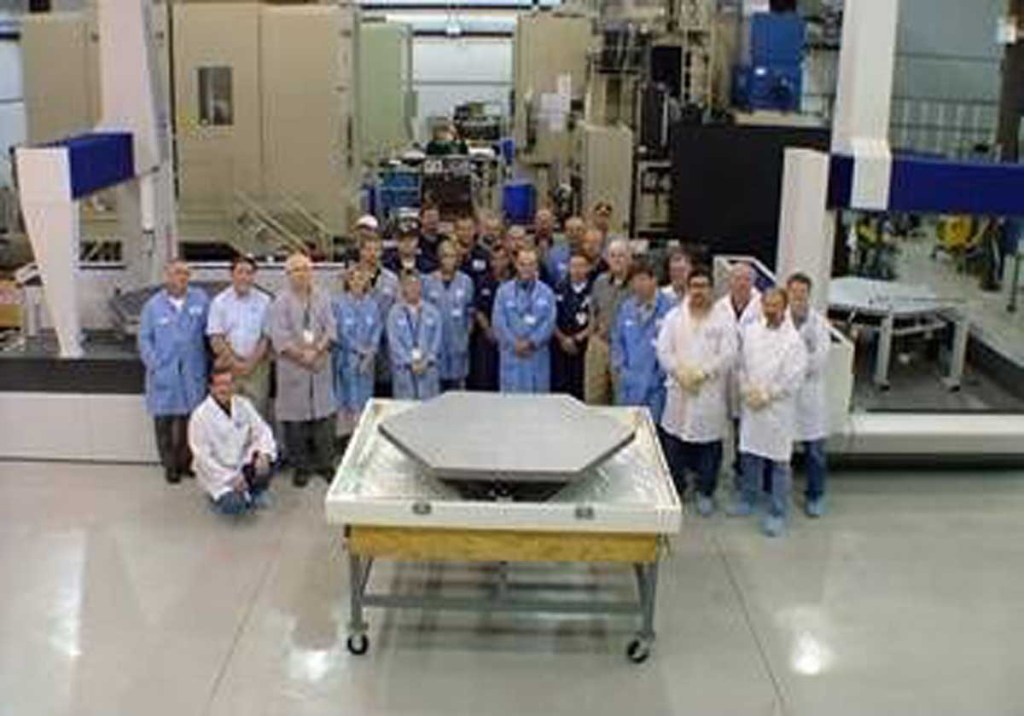‘We don’t do easy parts’
Published 5:00 am Saturday, July 23, 2022

- The team at General Dynamics pose with the Advanced Mirror System Demonstrator used onboard the James Webb Space Telescope.
When you think of deep space, typically the images that come to mind don’t include ones of a rural farming community in Northern Alabama. But the “can’t-quit” mentality of the development team at Cullman’s General Dynamics, have made many of NASA’s most notable projects possible, including its most recent, the James Webb Space Telescope.
Having worked with NASA in the past — providing the arms that house the corrective lens within the Hubble Space Telescope, as well as the internal glass gyroscopic components of the Gravity Probe B used to help prove Einstein’s Theory of Relativity — the team at General Dynamics were familiar with the level of precision involved with such projects. and as a Beryllium manufacturer, they were well equipped for the extensive undertaking of developing the panels needed for JWST’s primary imager — the Near Infrared Camera (NIRCam). These panels are enabling the telescope to observe parts of space and time never seen before, looking into the past when stars and galaxies first formed more than 13.5 billion years ago, and helping scientists to better understand the origins of the universe.
This week, using NIRCam’s Redshift technology — measuring the amount of a galaxy’s light stretching by the expansion of the universe — researchers discovered what is potentially the oldest known galaxy ever observed. At 13.4 billion years old, this predates the previous oldest known galaxy by 100 million years.
In addition to the NIRCam panels, General Dynamics also developed the Advanced Mirrors System Demonstrator, a 1.2 meter hexagon. In total, the Cullman team contributed 21 primary mirror segments, weighing less than 46 pounds (18 mirrors and three spares), two secondary mirrors, 21 delta frames and 10 various aft optical components.
“We don’t do easy parts,” said Jeff Calvert, a Cold Springs graduate who served as Program Manager for the JWST project. “We typically do the baddest of the bad, the most difficult pieces out there.”
Calvert attributes his ability to accept a daunting task to the foundational background in machining that he received from Wallace State Community College.
“[Wallace State] really gave me the confidence. The team there, Herb Black and Roy Bradford, gave me the start of a good foundation that if it can be made, you can make it,” Calvert said.
Comprised mostly of a team made up of graduates from both Cullman City and County schools, the team at General Dynamics first became involved with the JWST project nearly three decades ago, followed by a six year period of developing and perfecting the components. Calvert said that the unwavering quest for excellence that his team displays has been a key factor in the companies success.
“We are from a small community. You know, I went to Cold Springs in 1980 and we’ve got a lot of graduates from Cold Springs and West Point, Cullman, Holly Pond. But the work ethics they have is ‘if it can be done these guys will do it.’ There is not a, you know, ‘can it be done?’ They will do it … that same work ethic has gone into being able to make these dreams possible,” Calvert said.
As the JWST is just beginning to relay its first images of deep space back to earth, Calvert describes the amount of pride and enthusiasm on display at General Dynamics, as his team sees the long-awaited results of the exhaustive hours put into making the images possible.
“These guys, and our team have been anxiously awaiting this for now. We’re now discovering things God’s created, and we’re seeing those things firsthand. You know how this universe is starting to work. But to be able to be on the ground level of that and see it 10 years later is exciting. and it’s just now starting to send images back, who knows what is yet to be discovered out there,” Calvert said.
Images provided from the JWST may have taken place billions of years in the past, but Calvert doesn’t need the advanced optical technology of NIRCam to reflect on his beginnings at General Dynamics, or to look to the future as they await their contributions to NASA’s next deep space telescope, Roman, to offer an even more in-depth perspective to the universe surrounding us.
“When I first came here, we were just a bunch of 25-year-olds playing volleyball on break and tug of war. Now, that volleyball court has grown over, We’re no longer that younger generation. But we’ve been blessed to hire a large group of younger people. [We’re] trying to bring that younger generation in with the older, more mature generation and pass that dedication and that skill set on to the next guy, and keep us here for another 50 plus years,” Calvert said.




